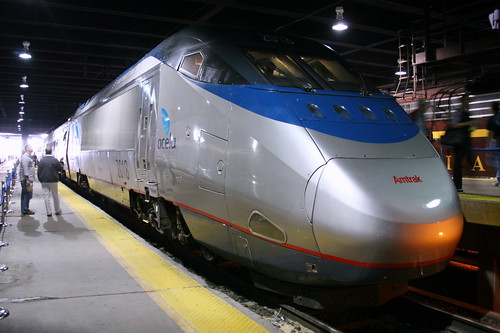Is High Speed Rail the Answer? – Critic lashes out at UK’s High-speed rail expansion plans
Source: Tree Hugger)
 Is Enthusiasm for High Speed Rail Just Another Speed Addiction?
Is Enthusiasm for High Speed Rail Just Another Speed Addiction?
The world is a confusing place – no sooner do the governments of the world finally start taking high speed rail seriously as an alternative to aviation, and the environmentalists start complaining. First we had Obama’s massive investment in high speed rail, which Jim Kunstler (who else?) described as “perfectly f***ing stupid.”And now UK politicians are limbering up to support a significant upgrade of the country’s rail system – but John Whitelegg over at The Guardian says High Speed Rail is an expensive and counterproductive red herring:
The HSR plan is a large and expensive sledgehammer to crack a modestly sized nut. We could stimulate the economy by building 1,000 miles of HSR, but the sums would not stack up in terms of how many jobs this would create per £100,000 spent.If we really want to create jobs in all local economies, rather than drain them away along a very fast railway line, we could insulate 20m homes; make every house a mini-power station to generate and export its own electricity; sort out extremely poor quality commuter railway lines around all our cities; improve inter-regional rail links; and build 10,000 kms of segregated bike paths to connect every school, hospital, employment site and public building to every residential area.

